The First Hampden Park
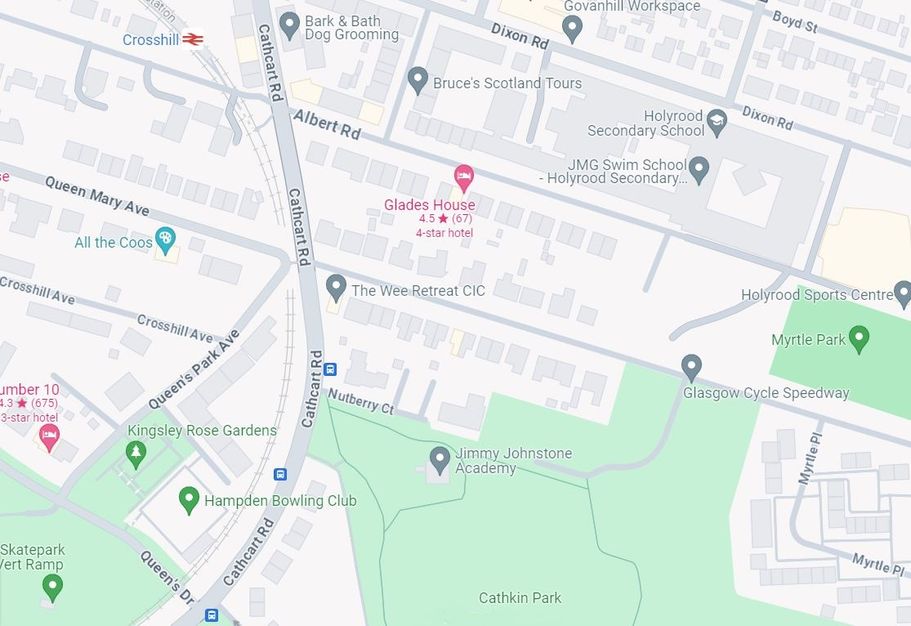
The move by Queen's Park from the public ground from which it took its name was not without problems. Knocked back once early in the year it was eventually agreed and the first game kicked off there on 18th October 1873. It was a Scottish Cup tie, the first for both sides, neither of which was at home. Played for on a neutral, perhaps a half-way ground it pitted a what was to be a 10-man Kilmarnock against Renton from the Vale of Leven. The Dunbartonshire side un-surprisingly were 2-0 victors.
Queen's Park itself was to play its first game at the new venue the following week, a 7-0 win over Dumbreck from just to the north at Ibroxhill. It would be the first of four home ties, including the final, in the first playing of the competition that five months later would see Scotland's doyen club take the title at home in front of a crowd of about 2,500 without conceding a goal.
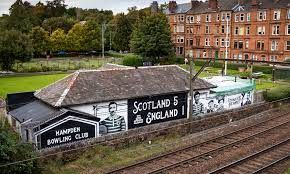
Queen's Park's new ground was to be used by the club for a decade. It was not only enclosable, as required in order to charge crowds to watch, although there were other vantage points in the vicinity, it would be the first to have turnstiles. Indeed by 1883 when the time came to have to move on 15,000 paying on-lookers could be and were accommodated. So where was the new ground? It had long been thought it was more or less where the bowling club that continues to carry the ground's name is still to be found.
That name is, of course, Hampden, Hampden Bowling Club currently, Hampden Park previously and named originally for a terrace of housing built to the immediately south. And that location is now confirmed by the re-discovery of a map drawn up as a part of the ground's eventual closure. And the ultimate reason for this first ground's disuse for football at least was the railway. The building of the line from Glasgow Central to Neilston needed to follow a route that passed across it. Indeed Queen's Park's history describes it as cutting through its north-west corner and that is precisely what the "map", in fact what are accurately drawn up plans, show.
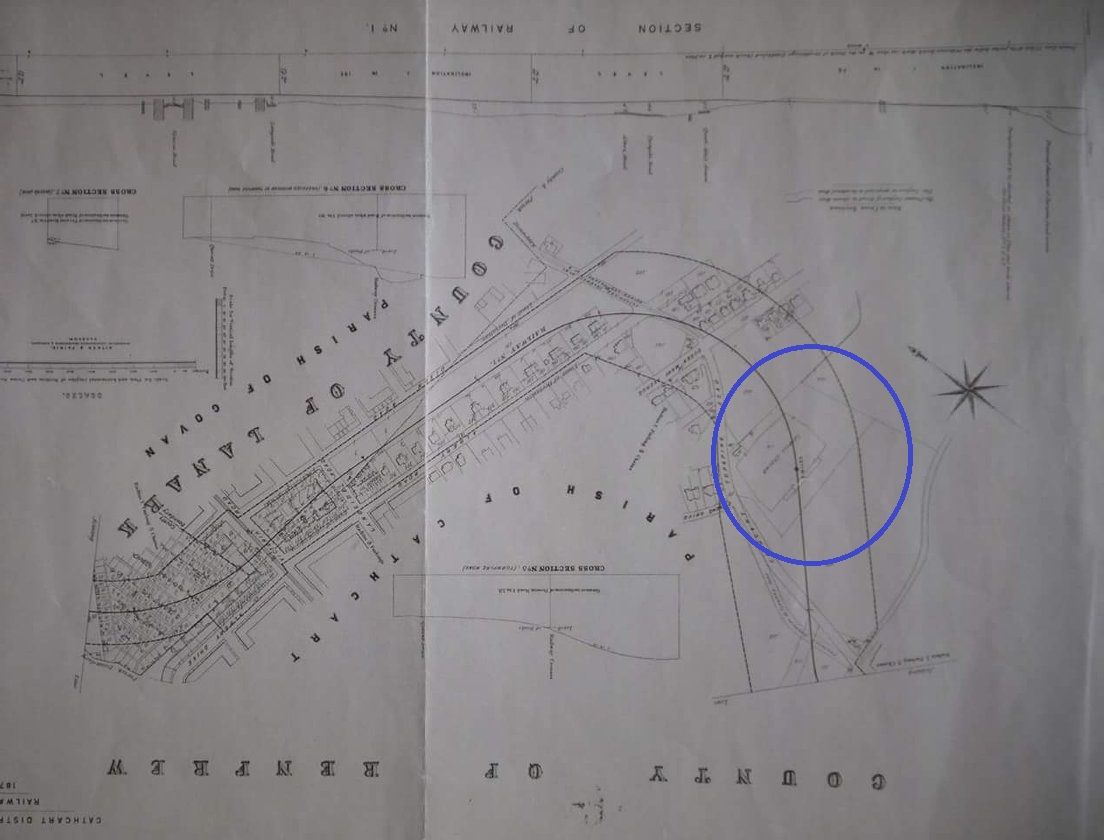
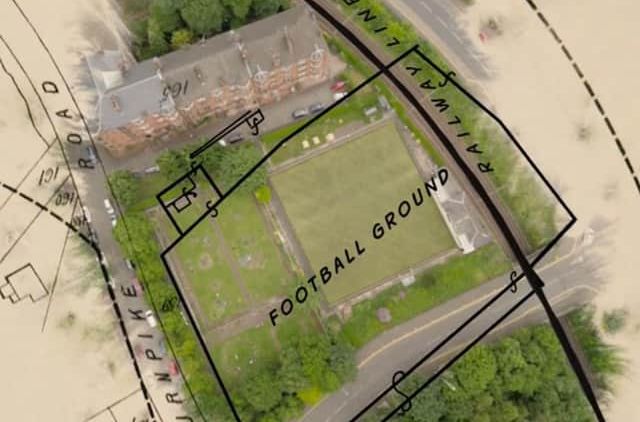
Moreover, in addition to confirmation the re-found plans also provide for the possibility of more accurate location of the defunct ground. A good first attempt had been made by The Scotsman in an article in 2021 to pinpoint the site but there are obvious short-comings. The first is that the Railway Plans clearly show not one but two outlines, the larger of the ground itself, the smaller of something else. Furthermore, the accuracy of the plans allows far more instrumental plotting of the orientation of both. Thirdly, quasi-contemporary description of the wider area can be incorporated. And finally standard dimensions of a football field can be applied as a further test of feasibility.
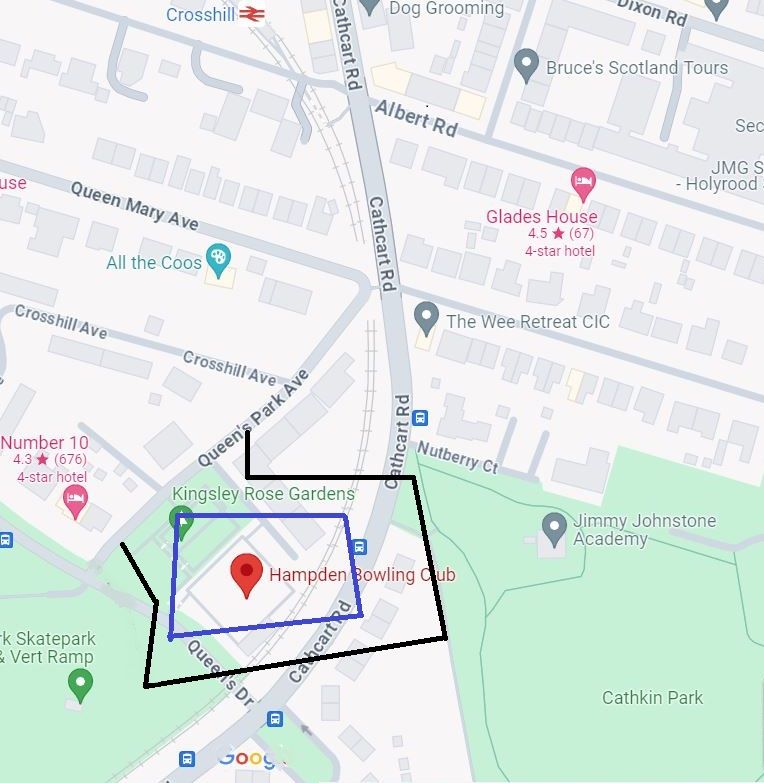
Description, in addition to the railway cutting through the north-west corner of something, also says that not just Hampden Crescent lay to the south but also that Myrtle Park Terrace was to the north with the implication that the ground lay more or less east-west. Dimensions from the railway plan also mean that the ground's outer limits, if to the west they were on the old turnpike, now more or less Queen's Park Avenue, to the east had reached today's Cathkin Park. The result is that not just the railway and the present Cathcart Road certainly run through the old ground probably both also cross the old pitch.
And here we come to that distinction between ground and pitch with the railway plan assumed to show the former as the outer shape and the latter the inner. Now a standing crowd of up to 15,000 implies on a current football pitch about thirty-eight deep or at least twenty-five yards. On this first Hampden Park that would have been impossible on two and a half-sides, each only able to take about 3,000 with about twice that at the east end and perhaps 1,500 at the west, a total of 13,500-ish. And that inevitably means the pitch, the playing area, was tiny; perhaps a maximum of just 75 yards in length and 55 across or a half of what would today be acceptable with all that implies for playing -style.